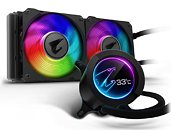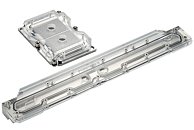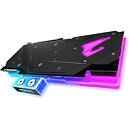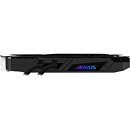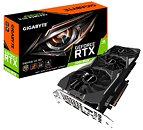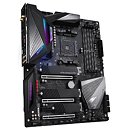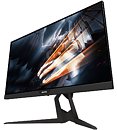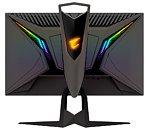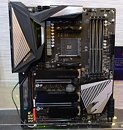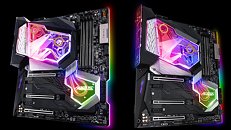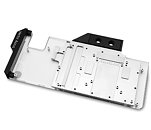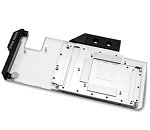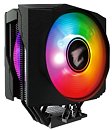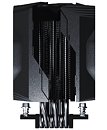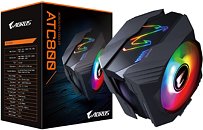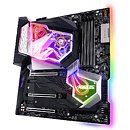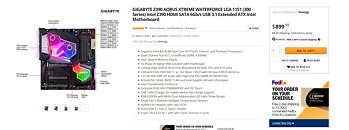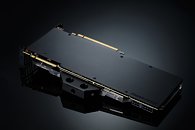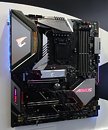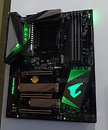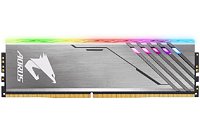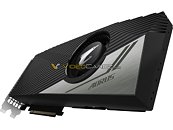
GIGABYTE Unveils Aorus Liquid Cooler 240
GIGABYTE today unveiled its first all-in-one closed-loop liquid CPU cooler, with the Aorus Liquid Cooler 240. A star attraction with this cooler is its cylindrical pump-block which has a circular LCD display on top, much like ASUS ROG Ryujin. Unlike the Ryujin, the display is white and takes up color from a circular RGB LED ring surrounding the display, giving it the appearance of a color display. Sleeved coolant tubes connect this block to a 240 mm x 120 mm radiator, which ventilated by a pair of 120 mm fans that have RGB LED illumination.
A single 3-pin addressable RGB connection handles lighting for the entire cooler, while a USB 2.0 header connection interfaces the cooler with GIGABYTE's RGB Fusion software, letting you cycle through its display. The included pair of 120 mm fans feature double ball-bearings, each spin up to 2,500 RPM, pushing 59.25 CFM of air, with a noise output of 18 to 39.5 dBA. The block is made of copper, while the radiator is made of aluminium. Among the CPU socket types supported are AM4, LGA115x, and LGA2066. The block is compatible with the Asetek-standard round AMD TR4 retention module that's part of Threadripper processors' retail package. The company didn't reveal pricing.
A single 3-pin addressable RGB connection handles lighting for the entire cooler, while a USB 2.0 header connection interfaces the cooler with GIGABYTE's RGB Fusion software, letting you cycle through its display. The included pair of 120 mm fans feature double ball-bearings, each spin up to 2,500 RPM, pushing 59.25 CFM of air, with a noise output of 18 to 39.5 dBA. The block is made of copper, while the radiator is made of aluminium. Among the CPU socket types supported are AM4, LGA115x, and LGA2066. The block is compatible with the Asetek-standard round AMD TR4 retention module that's part of Threadripper processors' retail package. The company didn't reveal pricing.
